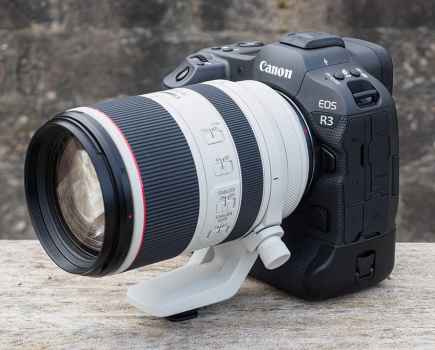Selling for $599/£599, the Google Pixel 7 delivers an excellent camera, tons of computational photography features and a beefy battery that can go for more than 24 hours. That kind of value can’t be argued with, but is it enough to sway devotees of iPhones or Samsung Galaxies? Joshua Waller takes a closer look to see if Google’s mid-range wonder does enough to justify itself.
Google Pixel 7 at a glance:
- $325 / £335 sim-free 8GB/128GB
- 12MP f/2.2 ultra-wide, without AF, 0.7x 16mm equivalent
- 50MP f/1.85 wide-angle camera with OIS, PDAF, 1x, 24mm equivalent
- 10.8MP f/2.2, 21mm equivalent, fixed focus selfie camera
- Up to 8x “Super Res Zoom” (8x stills, 7x video)
- Display: 6.3inch, OLED, 90Hz, HDR, 1080×2400 pixels
- Operating system: Android 13, 8GB RAM
- Dimensions: 155.6 x 73.2 x 8.7mm, 197g
The Google Pixel 7 made its official debut in October, though anyone who pays the slightest attention to tech news would have been aware of it before then. Google did plenty of teasing in the lead-up to the launch. The Pixel 7 arrived alongside its bigger brother Pixel 7 Pro, and with a considerable difference in asking price of £300/$300, these phones shaped up to be quite different propositions. They would later be joined by the Pixel 7a, a budget-friendly offering with a completely overhauled camera system.
On the inside, the Pixel 7 is powered by Google’s Tensor G2 chip, the same processor as features in the Pixel 7 Pro. The phone uses the Android 13 operating system, and together, these two deliver a smooth user experience, one that’s a decent jump up in polish compared to the Pixel 6.
It’s well and truly a phone in the middle, but the middle is an enormous market; those who don’t want to pay flagship prices, and don’t want the cheapest and simplest thing off the shelf, either. Of course, a phone isn’t just defined by its rivals and contemporaries; it needs to stand on its own as a device you’re going to want to use and enjoy using. So, for this review we’ve taken the Google Pixel 7 out to see how it performs, testing its camera capability, general operation and more.
For more options of great phones for photography, check out our guide to the best camera phones. We also have a guide to the best used smartphones if you’re looking to save some cash, as well as a breakdown of iPhone vs Android if you’re still stuck choosing between operating systems.
Google Pixel 7 Features
So, what does the Google Pixel 7 offer? To start with, Google took the view that rather than cram in a terrible 2MP macro lens, it would do better to focus on the pairing of the excellent main camera 50MP Octa OD Bayer wide camera, and a decent 12MP ultra-wide camera with an f/2.2 aperture. So, while it doesn’t boast the headline ‘triple-camera array’ of many contemporary smartphones, you arguably don’t miss much there.
The Pixel 7 includes the controversial (love it or hate it) camera bar, as well as a number of rather impressive computational photography features, that left us impressed last year by the Pixel. You may find the aluminium bar that houses the camera array to be visually offensive, an affront to the eyes. Or you may not care. Either way, it’s clear that it’s here to stay.
The Pixel 7 made a few changes from the previous year’s Pixel 6 (still a good-value phone if you can get it). Interestingly, its OLED display is actually very slightly smaller than the previous phone’s, going down from 6.4 inches to 6.3. This may sound like a downgrade, but Google is betting that the smaller screen and thinner bezels will result in a phone that’s more comfortable in the hand, while assuming that relatively few people are going to actually complain about losing 0.1 inches of display (they’re probably right).
Other improvements found in the Pixel 7 include an improved selfie camera over the Pixel 6, with the same 10.8MP unit as found in the Pixel 7 Pro, compared to the 8MP selfie camera in the Pixel 6.
Unfortunately, the Pixel 7 doesn’t benefit from some of the other improvements that have been made to the 7 Pro, such as the new macro mode (thanks to the ultra-wide camera on the 7 Pro featuring AF), and the 7 has to make do with a fixed-focus ultra-wide-angle camera instead.
There’s also the lack of a telephoto lens unit. Instead the 7 can use “Super Res Zoom” up to 8x, although the default option of 2x is normally the best to use.
In terms of other differences, the Pixel 7 has a 6.3inch screen compared to the 6.4inch screen on the Pixel 6, and the 6.7inch screen on the 7 Pro. The screen on the Pixel 6 and 7 is flat, compared to the curved edges on the more premium 7 Pro.
The difference in measurements is minimal, but the difference in hand is quite noticeable, and this also makes a difference if you use a case on the phone.
The Pixel 7 is on sale at $325/£335 sim-free for the 8GB/128GB model, and $403/£455 for the 8GB 256GB version, which puts in firmly in the mid-range price level.
The Pixel 7 Pro is currently priced around $599/$£635 for the 128GB storage option and $699/£824 for the 256GB which is noticeably less than other premium/flagship smartphones which often hit the £1000+ price point. For that reason, the Pixel 7 Pro also offers great value for money, considering what is on offer.
The selfie camera is a 10.8MP f/2.2 wide-angle (21mm equivalent) camera, which is fixed focus, and therefore doesn’t match the auto-focus selfie cameras on some other premium smartphones.
Let’s find out if the Pixel 7 is worth the money, or if it lacks something compared to the 7 Pro…
Google Pixel 7 Handling and Design
The Pixel 7 features a non-curved 6.3inch OLED screen, with a 1080×2400 pixel resolution, and a dynamic refresh rate up to 90Hz. Colours look great on the screen, and there’s also a good level of brightness on offer, which can help with visibility out in bright sunny weather.
Gorilla Glass Victus can be found at the front and back, and this is Gorilla Glass’ toughest protection currently available. An IP68 rating gives you a waterproof rating down to 1.5m for 30mins, although there is an exposed USB port; so this isn’t really recommended for regular use, without added protection.
Regarding software, the phone comes with Android 13, and you get (at least) five years of updates, as well as a 2year warranty. Google often release both feature updates, as well as security updates, so you can expect both camera improvements as well as bug fixes to come in future.
The screen and rear of the Google Pixel 7 is protected by Gorilla Glass Victus, photo: Joshua Waller / AP
Stereo speakers are included, as well as multiple microphones to ensure high audio quality both for playback and calls.
The Pixel 7 feels quite svelte in the hand, particularly compared with larger phones. It feels extremely well built, and how good the phone looks depends on what colour options you go for. The Obsidian black is attractive. I don’t think it looks as premium as the 7 Pro, but it’s not far off.
If you do go for the “Snow” or Lemongrass colours, then you get a shiny silvery camera bar, which I think looks a little bit better than the dark grey of the “Obsidian” model, but your own personal preference may differ.
As with almost every other smartphone out there, I’d definitely recommend the use of a case, as this will help reduce the slippery nature of the phone.
A 4355mAh battery is built-in, and offers fast wireless charging, as well as support for 30W fast charging. I had no worries about battery life when using the smartphone, and in general the phone feels extremely rapid, snappy, and responsive.
Using the camera app you get a row of camera modes along the bottom, with a shutter button above this. There’s a row of lens options, which include .7, 1x, and 2, which are short for the main cameras including 0.7x (for the ultra-wide), 1x (for the main wide angle camera), and 2x using the Super Resolution Zoom.
The different shooting modes available include:
- Night sight – which includes Astrophotography
- Motion – with options for Long exposure or action pan
- Portrait – with options for face retouching, and a 1x or 2x zoom
- Video – slow-motion, normal and time-lapse
- Cinematic – video with background blur
With more you can find ‘Panorama’, ‘Photo Sphere’ and Lens.
Beyond these you get additional photo features and options in playback, when editing photos, under Tools, including the Magic eraser, Unblur, and Portrait blur. The camera also features Face Unblur and Real Tone.
Night Sight – the night mode has been improved and is said to be three times faster than the previous Pixel. This can be used handheld, but when you use the camera on a solid surface or tripod, it will enable the astrophotography mode which can take much longer shots, as well as generate a timelapse video for you.
The Motion mode can be used to long exposure photography, such as a blurred waterfall or river, as well as light trails. How effective this is can depend on the subject, and there is limited control over settings. But when it works it can be very impressive, especially with no need for a tripod or other stabilisation that you would traditionally need with cameras.
The portrait mode gives you editing options to adjust the background blur (or bokeh), as well as add “Portrait Light” for more flattering lighting. Using the rear camera, you can shoot at 1x or 2x zoom, and when using the selfie camera, have the option of a 0.7x wide-angle view, or 1x.
Cinematic video is new with the Pixel 7 Pro and 7 and offers a “cinematic blur” to your videos, promising to keep your subject in focus, and the background blurred “for dramatic effect”. This appears to be in response to the feature that was introduced with the iPhone 13 Pro last year but can only be recorded at a resolution of FullHD, and results are generally less than impressive.
Google Pixel 7, this image is an example of where HDR has gone a bit over the top, 1/833s, f/1.8, ISO39, 7mm/24mm equivalent. Photo (C) Joshua Waller
Raw shooting is available, with the camera giving DNG images. If you want take images without strong HDR, then the raw files give you this option.
Google Pixel 7 Image quality and performance
The camera interface gives an easy-to-use system, with the majority of settings automatically controlled. If the camera detects low-light, it will automatically switch to Night sight. For those that want to take control, there are some settings you can change (such as white balance and brightness), as well as the previously mentioned raw option, but there are no manual controls available.
Pixel 7 ultra-wide camera, Amsterdam Botanic Gardens, 1/1479s, f/2.2, ISO45, 2mm/16mm equivalent. Photo (C) Joshua Waller
The ultra-wide-angle camera gives good results although there is some distortion, as with most ultra-wide-angle cameras on smartphones. The corners can also show some noise, particularly when shooting in darker conditions. Colour reproduction is very good, and detail is respectable, although does drop off into the far corners.
Pixel 7 Wide-angle camera, Amsterdam’s botanic gardens, 1/2571s, f/1.8, ISO40, 7mm/24mm equivalent. Photo (C) Joshua Waller
The wide-angle or standard camera uses an f/1.85 aperture, with PDAF (phase-detection AF), as well as Laser AF, and combined with Optical Image Stabilisation (OIS) can be used for low-light shooting. Image quality from this camera is very good, with detailed and sharp images, and excellent colour reproduction.
2x telephoto using digital Super Res zoom, 1/4219s, f/1.8, ISO43, 48mm equivalent. Photo (C) Joshua Waller
Use the telephoto option, and you can select 2x zoom, and this uses the main camera, with a crop, and Google’s “Super Res zoom” technology that takes a number of shots to improve the detail captured. You can also zoom to 8x zoom, and this uses the Super Res Zoom technology to take a number of shots, combining them to produce an image with (in theory) additional detail, and reduced noise.
Whilst the images we took definitely didn’t have the jagged edges that you’d normally see with digital zoom, we didn’t see much additional detail either, so this may be best avoided. That said, up to 2x gives reasonable results.
Micropia, Amsterdam, optical image stabilisation has meant we didn’t need to worry about a slower shutter speed, 1/25s, f/1.8, ISO119, 7mm/24mm. Photo (C) Joshua Waller
The Pixel 7 does not benefit from the 7 Pro’s macro mode, so this is one area where you will find it difficult to take really close up photos.
Night sight mode, this has made this scene look like it was taken during the day, whereas it was actually very dark, 1/49s, f/1.8, ISO903, 7mm/24mm equivalent. Photo (C) Joshua Waller
Low-light performance – When shooting low-light images using Night sight, it’s impressive how quickly the camera takes the photo – in comparison to the Pixel 6/Pro shots are much quicker to take, and this helps reduce blur and movement.
Google Pixel 7 selfie, using the portrait mode with background blur. Photo JW
The selfie camera is improved over the Pixel 6, giving a nice-looking image, even in less-than-ideal light. You can adjust the level of background blur and the processing does a good job of dealing with hair the majority of the time.
Standard video modes from the front and rear cameras can be recorded at up to 4K 60fps, with up to 1080p 240fps slow-motion available from the rear. There are options for 10-bit HDR video recording, as well as voice enhancement.
Value for money
As long as you don’t mind there being no telephoto camera and no macro mode, then the Pixel 7 is exceptional value for money, especially now as prices have fallen from their initial launch price. It is now being sold for less than the RRP if you shop around. The Pixel 7 Pro is also available at discounted prices. The 128GB version is now $599/£724 from $899/£849, and the 256GB is $699/£824 from $999/£949.
In the mid-range smartphone market, there are often compromises made, with other triple camera systems offering a great main camera, alongside low-resolution ultra-wide, or telephoto cameras, sometimes with an entirely pointless 2MP macro camera. So it’s nice to see the Pixel 7 offering 2 great rear cameras, and a good selfie camera.
Samsung Galaxy S21 FE 5G 128GB at $600/£699 (12MP ultra-wide, 12MP main, and 8MP telephoto, 32MP selfie), the OnePlus 10 Pro 5G $500/£649 (50MP ultra-wide, 32MP front camera, 8MP telephoto camera) and the Oppo Reno8 Pro $540/$/£499 (50MP wide, 8MP ultra-wide, and 2MP macro rear camera, 32MP front camera).
Google Pixel 7 Verdict
The Google Pixel 7 a lovely mid-price phone with enough features and performance to keep most users happy, especially at its current price which is $599/£599 for the 128GB version. The lack of a telephoto and a macro camera are negatives and if you want those features and a bigger display then go for the Pixel 7 Pro. The 128GB version is now $599/£724 from $899/£849, and the 256GB is $699/£824 from $999/£949.
However, if you don’t want to stretch that far, then you will still get an excellent camera system from the Pixel 7, and this includes an improved selfie-camera, quicker night mode, as well as general phone improvements, including a quicker fingerprint sensor, support for face-unlock, and a slightly smaller design and body.
Like the Pixel 7 Pro, the lack of a Pro or Manual mode on the Pixel 7 could be a deal breaker for some, as for some people this can be genuinely useful.
But if you don’t want to spend flagship money on a smartphone and simply want an excellent camera system, then the Pixel 7 offers an excellent combination of features, for a great price. You get a great main camera, a very good ultra-wide, and a decent selfie camera. Whilst we’d love to see a macro mode, we think the computational photography features help compensate for this.
Still, since this is a mid-range phone, we have another question to answer – does it do enough to justify itself over the cheaper Pixel 7a? This is a tricky one, as the two phones really are very similar. Displays are near-identical, with just a couple of tenths of an inch separating them. And what’s more, despite costing less, the Pixel 7a packs in a newer 64MP f/1.9 main camera. This may make it sounds like the 7a is just better in every way, but it’s not that simple, as Google claims the sensor in the Pixel 7 is larger and offers greater light sensitivity.
It may well do. But in practice, images from the two phones look pretty similar, as the computational photography on offer is amongst the best in both the Pixel 7 and the Pixel 7a, with some really useful photographic features; including motion blur, astrophotography, and for portraits real tone. There is of course the issue of some images looking like they’ve had the HDR settings turned up to the max, and there is no way to avoid this without shooting raw. If you can get used to this, then you’ll be very pleased with the images this smartphone produces. Both mostly have the same modes on offer, though the Pixel 7 has Action Pan and the 7a doesn’t.
The Pixel 7 also offers a few more advantages of its own over the cheaper phone. It can charge wirelessly, which is one of those things that doesn’t sound like much, but once you get used to having it you wonder how you ever did without it. It can also offer much more storage, with a 256GB version as well as the standard 128GB. It also has an IP86 rating for dust- and-water resistance, meaning it can withstand continued immersion in water while the Pixel 7a has to make do with IP67, and can’t.
For these reasons, the Pixel 7 justifies itself as one of the best mid-range phones you can buy. It’s a close-run thing though, and the cheaper Pixel 7a is also worth consideration.

For more options have a look at the best budget phones, and the best smartphones for photography.





